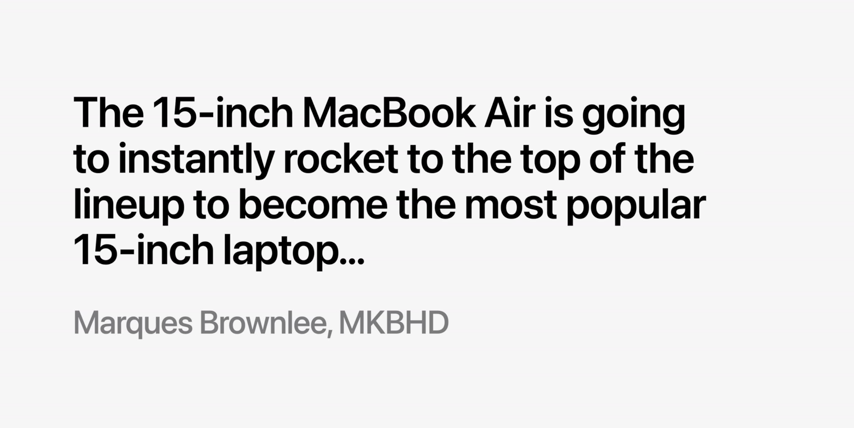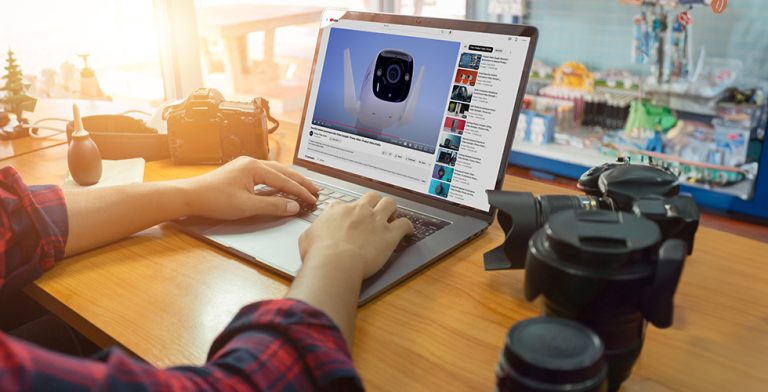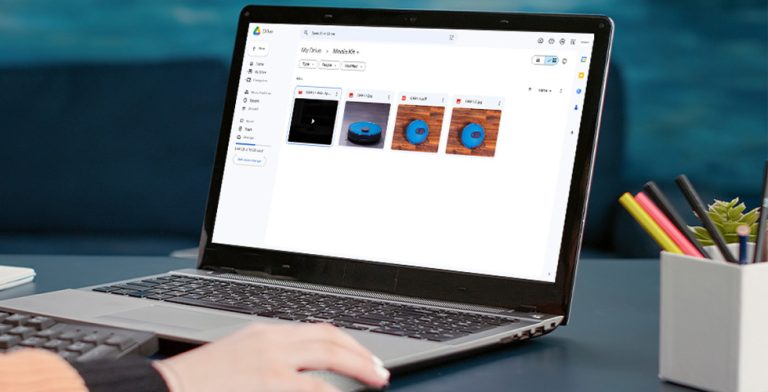Video content is a must for e-commerce brands looking to engage potential customers and increase sales. Product videos give shoppers the ability to see items up close and in action before making a purchase.
According to this Big Commerce data, product videos can increase conversion rates by up to 64-85% making them an extremely valuable marketing asset.
But simply having product videos isn’t enough. To truly captivate and convert shoppers, brands need to use compelling types of product videos tailored to their products and target audiences.
As a professional product video production company with over 5 years of experience in video production and optimization for e-commerce brands, we often advise clients on which video approaches work best to hook viewers and drive sales.
In this comprehensive guide, we’ll dive into the 5 essential product video types that all e-commerce brands should be using – including detailed tips, tricks, and best practices for production and promotion based on hard-won lessons from the front lines of video marketing.
Let’s get started!
1. Demonstration Videos
A simple demonstration video is one of the most effective and reliable product video types for e-commerce. The goal of these videos is to show potential customers how a product works in action – bringing its features and capabilities to life better than any static image could.
Demonstration videos give shoppers a clearer understanding of what a product does and how they might benefit from those functions.
For tangible products especially, being able to see them in use is tremendously helpful for shoppers’ decision-making process. For example, an electronics brand selling a new Bluetooth speaker would benefit enormously from a demo video showcasing the speaker’s sound quality, volume, and portability.
Letting potential buyers both see and hear how robust and clear the audio is, as well as how lightweight and easy to transport the speaker is, enables the brand to convey key selling points efficiently and persuasively.
The same goes for products like kitchenware, tools, toys, fitness gear, craft supplies, and more. Demonstration videos are versatile and highly effective for e-commerce brands in all of these verticals.
Even more conceptual products like apps and software can benefit from demo videos that walk through core functionality and user flow.
Crafting Compelling Demonstration Videos
So what goes into creating a demonstration video that actually captivates audiences and converts shoppers? Here are a few key tips:
- Focus on highlighting the most important features and functions. Resist the urge to make demo videos like long, dry infomercials explaining every minor detail. Keep them concise and dedicated to showcasing the attributes and capabilities that you know your target audience will care most about.
- Optimize video and audio quality. Invest in quality equipment and master production fundamentals like lighting, sound, framing, and editing. Especially for videos demonstrating tangible products, having crisp, high-resolution footage and clear audio is critical.
- Enhance with graphics and on-screen text. Consider using simple titles, animations, or bullet points to emphasize key features, product names/details, or important warnings. This further clarifies and enhances the demonstration.
- Get creative with locations and scenarios. Show products being used in real-world settings and situations that customers can relate to. For example, show electronics being used at the park or tools being used to refinish a deck. This contextualizes demonstrations.
- Keep it short. Unless you’re demonstrating an exceptionally complicated product, aim to keep videos under 1 minute long. You want to highlight the most compelling parts of the demonstration while retaining viewer attention.
- Spotlight your branding. Include logos, brand colors, fonts, and other signature visual elements to reinforce your brand identity throughout the video.
Promoting Your Demonstration Videos
Once you’ve produced an engaging demonstration video, promotion is key to maximizing its impact. Be sure to:
- Feature the video prominently on relevant product pages on your e-commerce site.
- Share natively on social media channels like Facebook, Instagram, YouTube, and TikTok.
- Run as video ads on platforms like Facebook and Instagram to reach new audiences. Consider retargeting customers who abandoned carts with demonstration videos.
- Embed demonstration videos in blog posts, emails, and other marketing content.
- Upload to video SEO platforms like YouTube with metadata optimized for video SEO.
Demonstration Video Example
Let’s look at an example of effective product demonstration videos from a leading brand:
- Dyson Demo: Showcases a vacuum cleaner emptying dirt and debris with tons of macro shots highlighting suction power and maneuverability. Short, punchy, and focused.
2. Promo Videos
Promotional and explainer videos directly address potential customers to educate them on products and persuade them to buy. These videos spotlight key features, value propositions, and calls to action in a dynamic sales pitch format.
Elements of effective promo videos include:
- Upfront value proposition – Clearly state the main consumer benefit or problem solved right away.
- Concise explanations – Use simple language, statistics, and graphics to efficiently explain how the product delivers value.
- Lifestyle association – Display the product being used in aspirational settings and achieving desired outcomes.
- Visual metaphors – Use engaging animations and video effects to symbolize abstract concepts and ideas.
- Calls to action – Provide clear direction on the next steps the viewer should take, like visiting a site or purchasing.
- Branding signifiers – Logos, colors, fonts, icons and more connect the video back to your brand.
- Motivating music – Upbeat background tracks energize and engage viewers.
Maximizing Promo Video Reach
Promote explainer and promo videos across both owned and paid media:
- Feature prominently on your website homepage, product pages, and other conversion-focused sections.
- Share natively on social media and incorporate it into ads.
- Repurpose into multiple formats like GIFs, carousels, and Stories.
- Run as video ads on YouTube, Facebook, Instagram, TikTok, and Reddit.
- Send in email marketing campaigns announcing products or promotions.
- Embed in guest blog posts and contributed articles on niche sites.
- Pitch to relevant publishers and influencers to share or react to your video.
3. Unboxing Videos
Another product video type that tends to perform extremely well in e-commerce is the unboxing video.
Unboxing videos capture a customer opening the product for the first time and experiencing the “big reveal” of everything inside the packaging. It allows viewers to unpack the product virtually along with the on-camera host.
Unboxing videos tap into viewers’ curiosity and excitement about new, exclusive products. We all remember the childlike joy of unwrapping gifts during the holidays. Unboxing videos evoke that same innately pleasurable feeling in audiences.
The sense of novelty, surprise, and discovery in unboxing videos makes them highly watchable and engaging for potential customers. This helps build brand relationships and drive sales. Unboxing videos are especially effective for:
New product launches – Build hype and excitement around new releases and limited editions.
High-end, luxury products – Convey prestige and indulgence with slick, sexy unboxings of premium products.
Electronics – Showcase sleek or complex gadgets emerging from packaging.
Subscription boxes – Provide monthly value and discovery.
Let’s explore how to create compelling unboxing videos for e-commerce products.
Producing Unique Unboxing Videos
While the concept is simple, there are techniques to elevate basic unboxing videos into something special:
- Build anticipation – Tease what’s to come before the unboxing to pique viewer curiosity. Consider showing packaging or sharing context first.
- Spotlight small details – Zoom in on packaging labels, folded instruction manuals, and other items nested inside the box.
- Capture authentic reactions – Have hosts express genuine excitement and interest at item reveals.
- Enhance unboxing sounds – Amplify crumpling, tearing, and rustling sounds using mics. Consider adding Foley effects.
- Use dynamic camera angles – Move around the unboxing activity and switch between wide shots and close-ups.
- Optimize set design – Use uncluttered surfaces and attractive backdrops to showcase products as they emerge.
- Editing and pacing – Maintain brisk energy with quick cuts between key moments. Leave just enough time to appreciate reveals.
- Seamless branding – Match branding between packaging, products, and video lower thirds/animates. Develop a consistent style.
Get Mileage From Your Unboxing Content
Unique unboxing videos present opportunities for additional content formats, including:
- Time-lapse unboxings – Condense long unboxings into 60-90 seconds fast-forward.
- Stop motion unboxings – Use stop motion techniques for fun, shareable videos.
- 360-degree unboxings – Let viewers interactively explore products from all angles.
- ASMR unboxings – Produce soothing, tingly unboxings with no talking and enhanced audio.
- Haul videos – Expand to showcasing multiple product unboxings in one video.
- Product reviews – Follow unboxings with more in-depth reviews after the host interacts with the products.
Promoting Unboxing Videos
Success metrics for unboxing videos include views, comments, sentiment, and conversions. Be sure to promote unboxings across platforms:
- YouTube – Upload natively with engaging thumbnails and titles optimized for search.
- Facebook/Instagram – Share as native video posts and in Ads Manager.
- Email marketing – Send unboxing videos to customer lists to announce new products.
- Influencer marketing – Provide free products to relevant creators to unbox on their channels.
- Link in online listings – Add unboxing videos to product detail pages on your e-commerce site.
- Social listening – Monitor and engage with viewers commenting on your unboxing content.
Unboxing Video Example
Here is one excellent example of the product unboxing video created by MKBHD:
- Pixel 6/6 Pro Unboxing – High production value, with original sound, buildup, big visual reveals, and also the first impression thoughts.
4. Comparison Videos
Shoppers deciding between multiple similar products want to understand how options compare. Comparison videos present product features and specs side-by-side so viewers can clearly see similarities and differences. This helps buyers evaluate choices and determine which product best fits their needs.
For e-commerce brands, comparison videos are extremely useful marketing assets because they:
- Educate – Explain detailed product attributes and technical capabilities.
- Contrast – Emphasize unique selling points and competitive advantages.
- Simplify – Distill complex information into easy-to-digest visual formats.
- Demonstrate – Often incorporate product demos to showcase key differences.
- Convert – Push comparison shoppers toward your product.
Let’s explore tips for creating compelling comparison videos that help turn shoppers into customers.
Crafting Compelling Comparison Videos
Great comparison videos artfully combine product information with visual assets into engaging video content. Here are some best practices:
- Spotlight distinguishing features – Specify the factors and functions that make your product superior. Show, don’t just tell.
- Use graphics and text – Charts, lists, animations, and other visual elements help quickly communicate differences.
- Demonstrate in action – When useful, show side-by-side demos highlighting the impact of product variations.
- Address buyer concerns – Acknowledge both pros and cons to show impartiality, then emphasize the most relevant pros of your product.
- Keep consistent structure – Cut back and forth between products as you address each factor to avoid jarring jumps.
- Appoint knowledgeable hosts – Have hosts who can speak credibly about the technical differences and buyer considerations.
- Optimize pacing and runtime – Comparison videos can run a bit longer than other product videos given the amount of information. Aim for 3-6 minutes based on complexity.
Formats For Comparison Videos
There are a variety of formats e-commerce brands can use for comparison video content:
- Head to Head – The classic split screen or jump cut showing two products side-by-side.
- Pros and Cons List – Simple bullets showing textual lists of each product’s benefits and drawbacks.
- Feature Matrix – A table or grid showing product features and specs across columns and rows.
- Value Analysis – Comparison based on metrics like price, quality, and performance ratings.
- Expert Commentary – Product reviewers provide detailed analysis of pros, cons, and recommendations.
- Animation / Motion Graphics – Using illustrations, icons, and data visualizations to creatively present differences.
Promoting Your Comparison Content
Be sure to share and distribute comparison videos across platforms:
- YouTube – Optimize search rankings around comparative keywords. Include links in descriptions to product pages.
- Company website – Feature on product pages and category pages where people are comparison shopping.
- Social media – Share natively and run as ads to reach your audience. Use catchy thumbnail images that highlight differences.
- Review sites – Provide comparison videos to influencers on YouTube, blogs, and consumer electronics sites to include in reviews.
- Retargeting Ads – Show to previous site visitors who viewed multiple similar products but didn’t convert.
Comparison Video Examples
Check out this stellar example of product comparison video:
- GoPro Hero 12 vs 11 vs 10 vs 9 – Upbeat host evaluates and demonstrates the last four GoPro Hero models.
5. Customer Testimonial Videos
A variation of customer review videos are dedicated testimonial videos. These feature customers speaking directly to the camera endorsing your brand and products. It can be one customer speaking about their experience or short clips of multiple customer testimonials.
Testimonial videos capture authentic reactions, emotions, and personal stories about how a product has impacted real people’s lives. The genuine tone and credibility of customers build trust and sway buying decisions.
Elements of strong customer testimonial videos include:
- Variety of perspectives – Diverse demographics, backgrounds, and use cases.
- Conversational style – Candid, unscripted reactions feel more believable.
- Evocative descriptions – Storytelling around specific product benefits.
- Thanking the brand – Gratitude and shouting out the company enhances authenticity.
- Well-composed visuals – Flattering lighting, framing, and film quality for mainstream consumption.
- Seamless branding – Match video style and lower-thirds to brand visual identity.
Repurposing Testimonials
Get more mileage from testimonial footage by repurposing across formats:
- Short social media clips – Highlight standout sentences praising your product.
- Testimonial compilation reels – Combine multiple clips with text graphics into Instagram / TikTok Reels.
- Customer montages – Interweave B-Roll footage of diverse customers using products.
- GIFs – Convert favorite moments into small animated GIF graphics to share in articles and social posts.
- Retargeting ads – Remind those who previously browsed products with custom video testimonials.
Customer Testimonial Case Study: Apple’s iPhone 15 Launch
During Apple’s launch of the new iPhone 15, they featured a testimonial quote from popular tech reviewer Marques Brownlee (MKBHD).
The quote from Brownlee that Apple displayed on the screen was:
“The 15-inch MacBook Air is going to instantly rocket to the top of the lineup to become the most popular 15-inch laptop…”

This type of influencer endorsement, presented as a testimonial, lends tremendous social validation right from Apple’s stage. Quoting reviews from respected figures the audience follows packs a punch.
Recap: Essential Types of Product Videos for E-commerce Sellers
Let’s recap the 5 must-try product video styles covered in this guide:
- Demonstration Videos – Show how a product delivers value through visual instruction and examples.
- Unboxing Videos – Capture the engaging product reveal experience as the packaging is opened.
- Comparison Videos – Provide side-by-side analysis of product features and benefits versus competitors.
- Promo Videos – Directly address customers in a dynamic sales pitch highlighting value propositions.
- Customer Testimonial Videos – Showcase authentic customer endorsements for credible social proof.
As an e-commerce brand, take the time to try producing quality videos in these compelling styles customized for your unique products and target audience.
Videos that inform, entertain, and inspire audiences to purchase your products are marketing gold. If you need any help bringing these video styles to life for your brand, don’t hesitate to reach out!
NEW PRODUCT RELEASE SOON?

Add Your Heading Text Here










